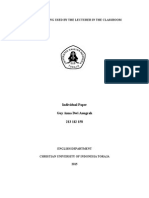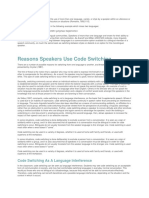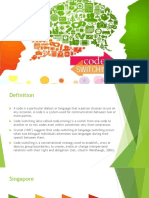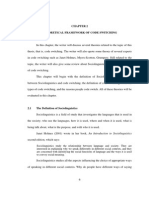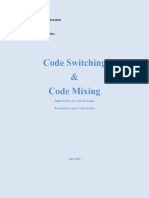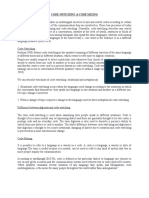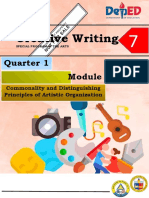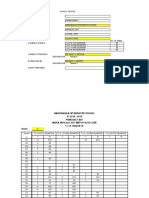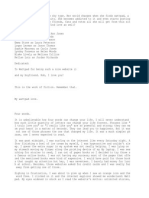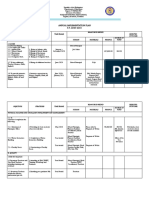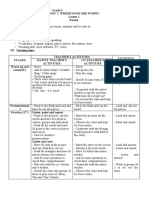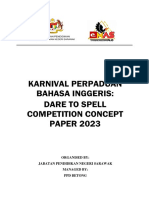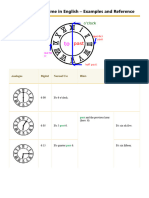0% found this document useful (0 votes)
113 views4 pagesCode Switching
Code switching refers to alternating between two or more languages or language varieties in the context of a single conversation. It is a common practice in multilingual communities where speakers share two or more languages. Code switching occurs for various reasons such as giving respect to a new conversation participant, changing topics, accommodating a new third person present, gaining an advantage in negotiations, or adjusting to a new situation. It is studied by linguists to understand when and why bilingual speakers switch between languages.
Uploaded by
Fariz ArdiansyachCopyright
© © All Rights Reserved
We take content rights seriously. If you suspect this is your content, claim it here.
Available Formats
Download as DOCX, PDF, TXT or read online on Scribd
0% found this document useful (0 votes)
113 views4 pagesCode Switching
Code switching refers to alternating between two or more languages or language varieties in the context of a single conversation. It is a common practice in multilingual communities where speakers share two or more languages. Code switching occurs for various reasons such as giving respect to a new conversation participant, changing topics, accommodating a new third person present, gaining an advantage in negotiations, or adjusting to a new situation. It is studied by linguists to understand when and why bilingual speakers switch between languages.
Uploaded by
Fariz ArdiansyachCopyright
© © All Rights Reserved
We take content rights seriously. If you suspect this is your content, claim it here.
Available Formats
Download as DOCX, PDF, TXT or read online on Scribd
/ 4



